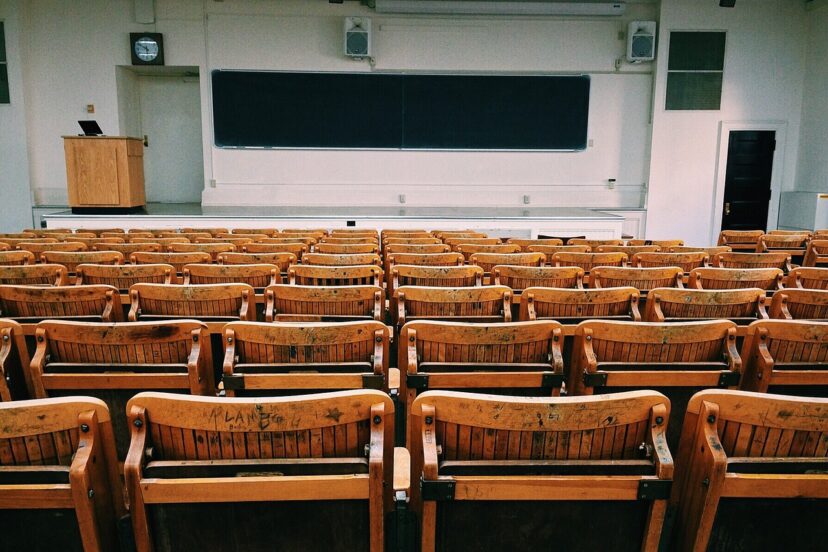Frank Rosenthal was one of the biggest names in sports betting history. He changed how people…
Differences Between College and Pro Sports Betting

Placing a bet on a college game isn’t the same as wagering on the pros. The rules, risks, and strategies are different, and understanding these differences can make or break a bettor’s success. This article explores the key differences between college and pro sports betting, including legality, point spreads, odds movement, and home-field advantage. It also provides two handicapping strategies for NCAA football and basketball.
Major Differences Between College and Pro Sports Betting
- Legality – College sports betting is restricted or banned in some states, while pro sports betting is more widely accepted.
- Point Spreads – College games have wider point spreads due to larger skill gaps between teams.
- Odds Movement – College sports odds tend to shift more because of lower betting volume and greater market sensitivity.
- Risk Level – College sports betting is riskier due to player inexperience, inconsistent performance, and unpredictable factors like academic suspensions.
- Home-Field Advantage – College teams benefit more from home-field advantage due to crowd noise and travel conditions.
- Betting Volume – Pro sports attract higher betting volume, leading to more stable lines compared to college games.
Is College Sports Betting Legal in the U.S.?
Sports betting laws differ from state to state. While betting on professional sports is widely legal, college sports wagering comes with more restrictions. Some states ban it altogether, fearing that it could lead to game-fixing and threaten the integrity of the sport. Others allow college betting but prohibit wagers on in-state teams or limit certain prop bets to prevent manipulation. Before backtesting a strategy, it’s essential to understand these laws and how they might impact your approach.
College Sports Point Spreads vs. Pro Leagues
Point spreads in college sports tend to be wider than in professional leagues. The gap between top teams and weaker teams is often significant, leading oddsmakers to set larger spreads. In professional sports, talent is more evenly distributed, making spreads tighter and games more competitive.
For bettors, this means that large point spreads in college games can create both opportunities and risks. Heavily favored teams may cover the spread easily, but upsets happen more often due to inconsistent performance. Bettors should adjust their strategies accordingly, considering factors like motivation, coaching, and playing conditions before placing bets.
Do College Sports Betting Odds Move More Than Pro Leagues?
So, do College Sports Betting Odds Move More Than Pro Leagues? The answer is yes. College sports betting odds tend to fluctuate more than those for professional leagues. Since fewer people bet on college sports, the odds are more sensitive to large wagers. A few big bets can cause strong line movement, whereas professional sports markets – like the NFL and NBA – are more stable due to higher betting volume.
Home-Field Advantage in College vs. Professional Sports Betting
Home-field advantage is stronger in college sports. Stadiums in college football and basketball often have intense, passionate crowds that create deafening noise levels. Young college athletes, who may not be used to such pressure, are more prone to making mistakes under these conditions. False starts, missed free throws, and communication issues are more common in college games due to crowd influence.
Travel conditions also impact college teams more than professional ones. College athletes don’t have the luxury of private jets and five-star accommodations like pro teams do. Long bus rides and unfamiliar environments can contribute to fatigue, making road games even more challenging.
In professional leagues, home-field advantage still matters but to a lesser extent. Pro athletes have years of experience playing in hostile arenas, and they are better equipped to handle pressure. Additionally, professional teams have access to advanced preparation methods, such as in-depth video analysis, sports science-based recovery programs, and data-driven game planning, allowing them to adjust to different environments more effectively. While home teams still hold an edge, the difference is less pronounced than in college sports.
Handicapping Strategies for NCAA Football
Successful college football betting requires careful analysis and strategy. Unlike the NFL, where teams have more consistency, college football sees bigger talent gaps, coaching mismatches, and unpredictable outcomes. Here are some effective handicapping strategies:
- Focus on Coaching Trends – College football teams rely heavily on coaching styles. Some coaches excel at covering spreads, while others struggle. Researching coaching trends helps identify good betting spots. Pay attention to how coaches perform in big games, against the spread (ATS), and after bye weeks.
- Look at Recruiting Rankings – Talent gaps in college football are wide. Teams with strong recruiting classes often outperform expectations. Checking recruiting rankings can reveal undervalued teams. Consistently high-ranked recruiting teams usually have deeper rosters, making them more resilient to injuries and fatigue.
- Monitor Weather Conditions – Weather plays a bigger role in college football than in the NFL. Many college stadiums are outdoors, and weather can drastically affect the game. Wind, rain, and snow impact passing teams more than run-heavy teams. Bettors should check forecasts before placing bets.
Handicapping Strategies for NCAA Basketball
College basketball betting requires a different approach than the NBA. The playing style, game length, and overall structure vary. Here are key strategies to consider:
- Analyze Home and Away Performance – College basketball teams vary widely in home vs. away performance. Some teams dominate at home but struggle on the road. Checking home and away stats helps bettors make informed bets. Factors like travel fatigue and crowd intensity can make a significant difference in performance.
- Study Tempo and Pace of Play – College basketball teams play at different speeds. Fast-paced teams cover large spreads more easily, while slow teams keep games close. Understanding tempo helps bettors choose the right bets. Teams with high possessions per game tend to generate more scoring opportunities, making overs more favorable.
- Pay Attention to Injuries and Depth – Unlike the NBA, where teams have deep rosters, some college basketball teams rely heavily on a few key players. An injury to a top scorer or point guard can significantly impact a team’s performance. Bettors should track injury reports and consider a team’s depth before wagering.
Conclusion
The differences between college and pro sports betting are important for handicappers to understand. College sports betting is riskier due to wider point spreads, volatile odds, and stronger home-field advantage. Betting volume and legality also differ from pro sports. By knowing these factors and using solid handicapping strategies, bettors can improve their chances of success in college sports betting.
Like this article? Pin it on Pinterest!





